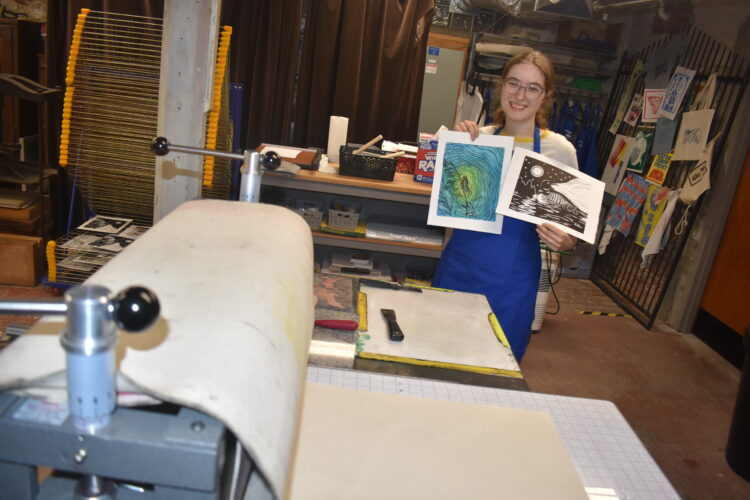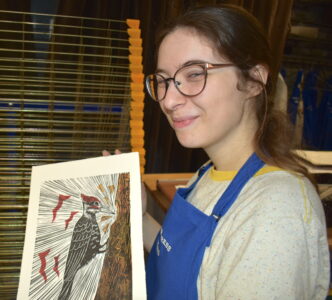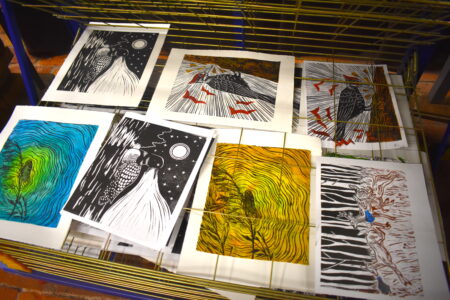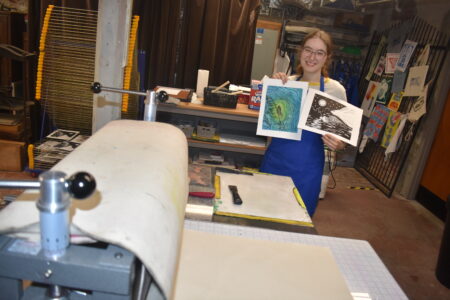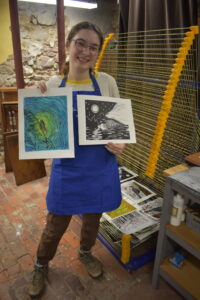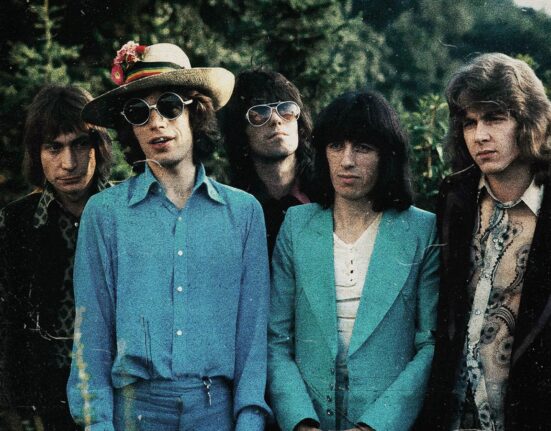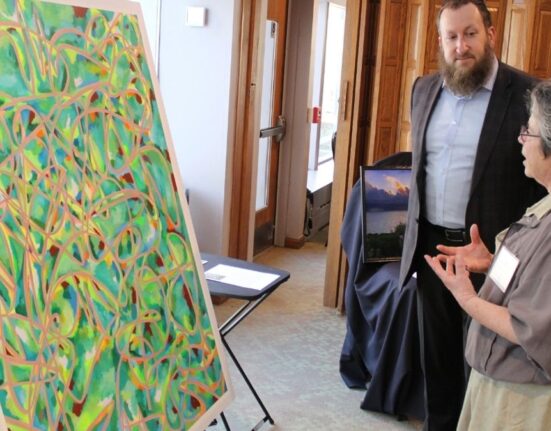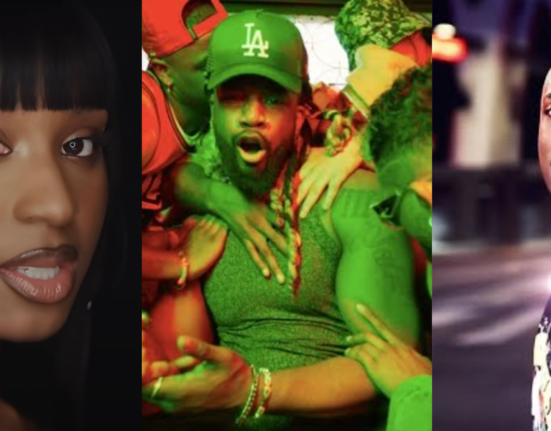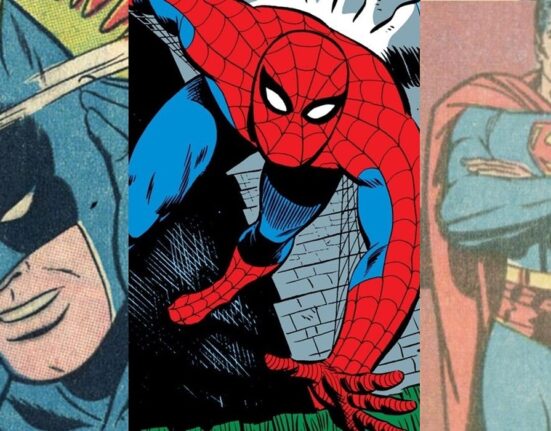The Grand’s artist-in-residence, Eliza Ploghoft, shows off two of her audio themed animal prints, created in the Cellar Press. Her series also includes a woodpecker, deer and coyotes.
NEW ULM – For the last two weeks, Eliza Ploghoft, The Grand’s latest artist-in-residence, has been experimenting with the connection between sound and visuals.
During her two-week residency, Ploghoft has worked on an ambitious lino relief print series that captures not only the images of local wildlife but the noises they make.
Ploghoft has worked on the project since Aug. 12. Within the first week, she managed to carve five linoleum print blocks based on different animals; loon, woodpecker, cicada, deer and coyote. If there is time, she might carve a frog lino-cut as well.
Some artists might be content to simply create lino-block prints of animals, but Ploghoft decided to challenge herself.
“My goal is to create wildlife prints with a visual representation of the sounds they make,” she said.
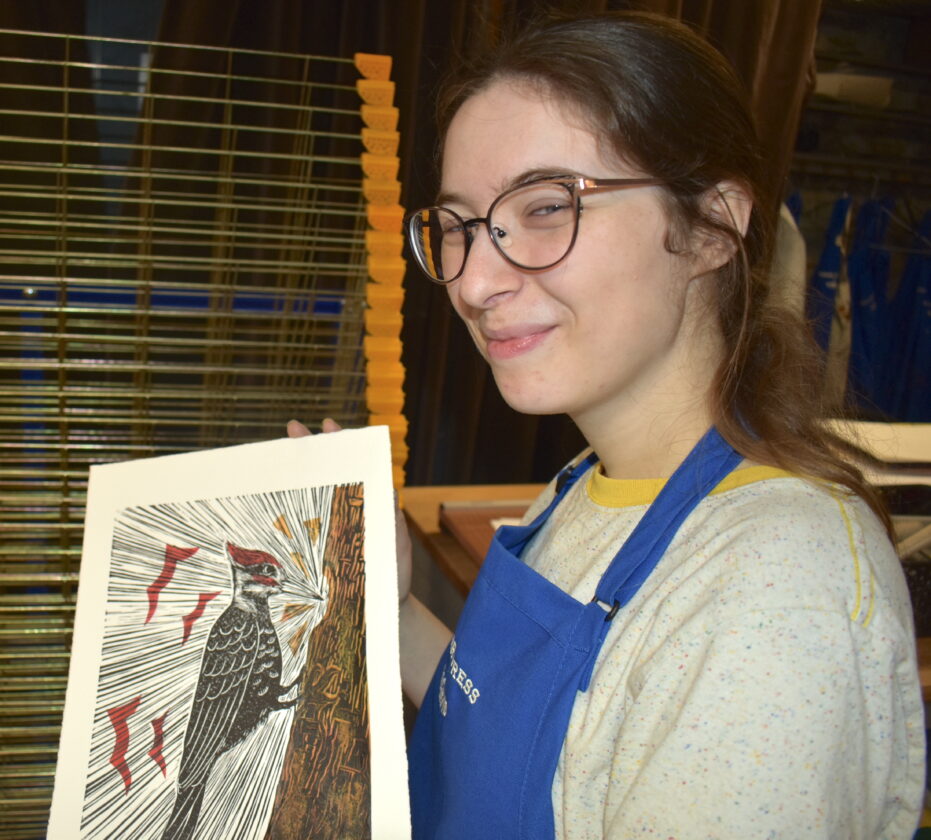
Eliza Ploghoft holds up her recently created woodpecker print. The print is part of a wildlife series that uses visual metaphor to convey sound.
Each print includes a visual wave imagery representing the sound each animal makes. The cicada has a rough vibrating wave. The coyotes have an overlapping echo wave and pop marks for barks. The woodpecker has less wave and more sharp piercing lines. The deer are fairly quiet, but Ploghoft gave them a muffled soundcloud.
“Animals are great, but I wanted more than visuals,” she said. “Everything gives off the sound. Sound is all around us. I want to represent that. I live in the country and I hear coyotes all the time. There is a lot to notice if you just listen.”
Figuring out how to represent animal sounds in visual media was a struggle. Ploghoft said she initially considered using onomatopoeia – placing words into the print that make the sound. She was tempted to put the word “yip” above the coyotes, but that felt too comic book-like and too easy. Instead, Ploghoft did include pop marks above the coyote to visually convey the yips.
One side effect of creating a visual metaphor for sound is each block print is full of lines. There is very little negative space in her prints. The loon block has the most open space. The loon floats on a lake with star filled sky only broken up by the honk of the loon. The honk is visualized as northern light waves escaping the loon’s beak.
Each of the prints features multiple color layers. Typically, when a print uses the reduction block method to create multiple layers. Each color layer for each print is done first. The original print block is cut down before creating another color layer. This effectively destroys the master block, making future prints impossible.
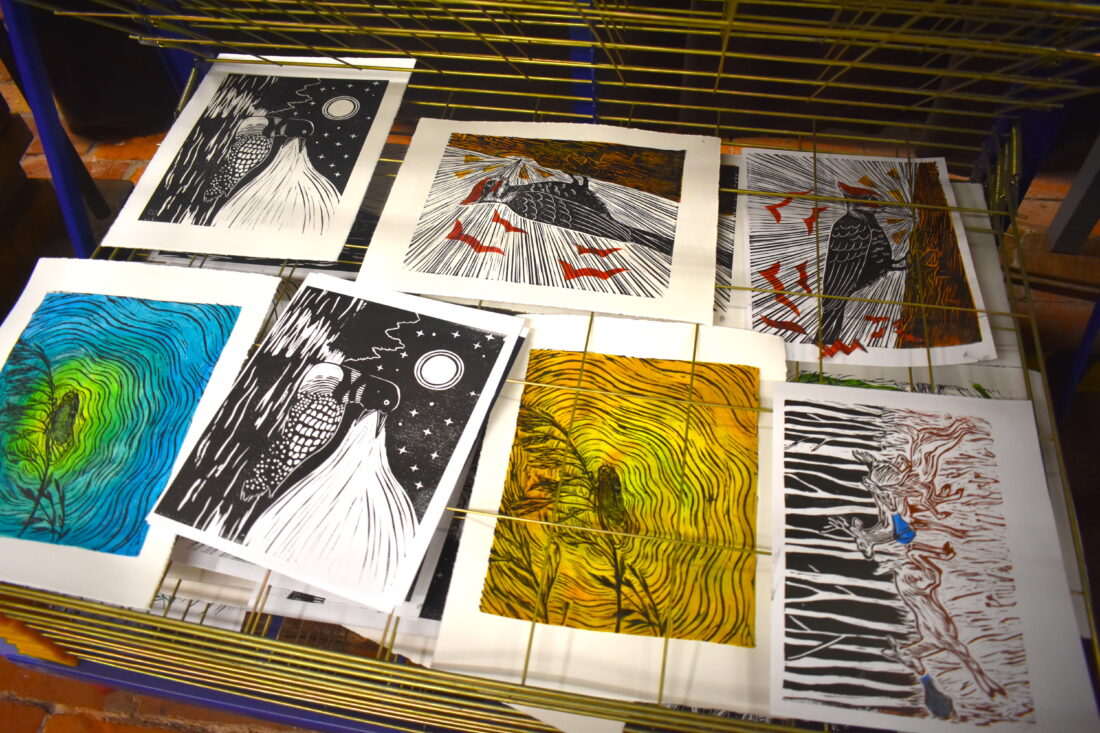
Prints created by mix-media artist Eliza Ploghoft dry on a Cellar Press rack. These prints were created during Ploghoft’s residency at The Grand.
Ploghoft chose a different method. Rather than reducing her block for each layer, she created a tissue paper cutout to cover the print block from the paper. This keeps sections of the print free of color, but the texture and outline transferred through.
She said this option allowed her to better experiment with color rather than having one chance to get it right.
Ploghoft is a native of the Lake Crystal area. She started making art as a kid and said she never really stopped. In college, she received a Bachelor of Arts degree in Illustration but has dabbled in multiple forms of art. She considers herself a mixed-media artist.
Ploghoft said currently her career is currently not geared toward art but is hoping to move in that direction. She said this residency at The Grand was the perfect opportunity.
“I really appreciated the opportunity to work on art for an extended period,” she said. That is what the residency gave her, time to work on art without other outside distractions.
Her plans after the residency are to continue making mixed-media art. She likes combining illustration with painting.
As for her animal sound print series, Ploghoft said when the prints are displayed, she would like to incorporate a QR it that would play a recording of the animals.
- Eliza Ploghoft holds up her recently created woodpecker print. The print is part of a wildlife series that uses visual metaphor to convey sound.
- Prints created by mix-media artist Eliza Ploghoft dry on a Cellar Press rack. These prints were created during Ploghoft’s residency at The Grand.
- The Grand’s artist-in-residence, Eliza Ploghoft, shows off two of her audio themed animal prints, created in the Cellar Press. Her series also includes a woodpecker, deer and coyotes.
- The Grand’s artist-in-residence, Eliza Ploghoft, shows off two of her audio themed animal prints, created in the Cellar Press. Her series also includes a woodpecker, deer and coyotes.

